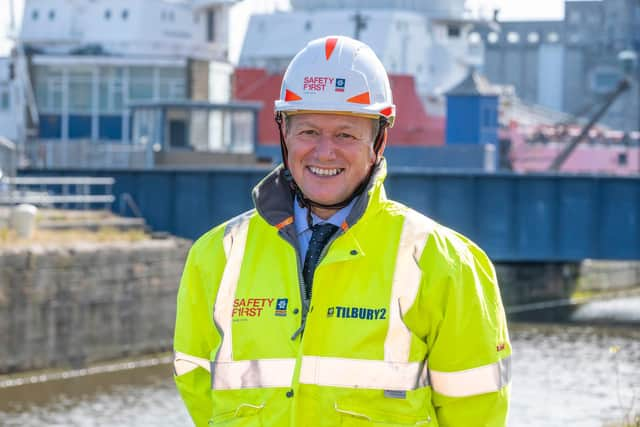Firth of Forth 'net-zero hub' key to achieving Scotland's climate goals, new research suggests
The development of such hubs around the UK has proved a key plank of the country’s strategy towards achieving net zero by 2050.
Scotland, which has a 2045 net-zero target, could advance its ambitions by establishing a hub on the Firth of Forth, experts at energy consultancy Wood Mackenzie have argued.
Advertisement
Hide AdAdvertisement
Hide AdMalcolm Forbes-Cable, vice president, consulting, said: “The Firth of Forth area is Scotland’s major industrial cluster. The area is responsible for more than 10 per cent of Scotland’s emissions but is critical to the Scottish economy.


“Establishing a net-zero hub on the Firth of Forth would complement the development of Scotland’s net-zero roadmap, and become a key element of national efforts to deliver net zero.”
The UK was the first major economy to commit to net zero, however it currently has no operational carbon capture utilisation and storage (CCUS) capacity. Low-carbon hydrogen production is in early development, and together with renewables and CCUS, is a key pillar of the nation’s future energy system.
Scotland is seen as having a critical role to play in supporting the UK’s net zero ambitions.
The latest research by Edinburgh-founded Wood Mackenzie, also known as WoodMac, notes that Scotland’s “vast” offshore renewable resource potential combined with a “rich oil and gas legacy” has created deep offshore engineering and subsurface expertise, extensive oil and gas infrastructure, and established a “reputation for excellence in the global energy business”.
Forbes-Cable added: “Running down and ultimately offshoring high-emissions sectors would help to meet the UK’s emissions objectives, but, in the process, destroy the country’s industrial base and would not see any net global reduction in emissions.
“For core industries that are vital to the economy, the UK must resolve how to cut emissions and mitigate the remainder. It is a tough line to walk, but success will reinvigorate the industrial base, securing jobs and the foundations of the national economy.”
He said creating a Firth of Forth net-zero hub would meet the challenge head on.
Advertisement
Hide AdAdvertisement
Hide AdForth Ports, which owns ports on the Forth Estuary at Grangemouth, Leith and Rosyth, welcomed the research paper.
Group chief executive Charles Hammond said: “Wood Mackenzie’s report and conclusions are timely and incisive. At Forth Ports, our vision is to create a green port ‘hub’ and ‘green growth corridor’ at the heart of Scotland that delivers a just and practical energy transition to meet the UK and Scottish governments’ net zero and energy transition targets.
“We want to collaborate with the whole of team Scotland to create new, high quality green energy jobs that will enhance Scotland’s Central Belt industrial powerhouse while tackling deprivation around our ports, contributing to the levelling up of the large industrial areas in our coastal communities.
“This is already under way in Leith where we have announced a privately financed £40 million investment in a renewable energy hub at the port.”
He added: “These industrial areas must play a vital role in facilitating the country’s net zero and energy transition ambitions and creating new, high quality green energy jobs.”
A message from the Editor:
Thank you for reading this article. We’re more reliant on your support than ever as the shift in consumer habits brought about by coronavirus impacts our advertisers. If you haven’t already, please consider supporting our trusted, fact-checked journalism by taking out a digital subscription: www.scotsman.com/subscriptions
Comments
Want to join the conversation? Please or to comment on this article.
